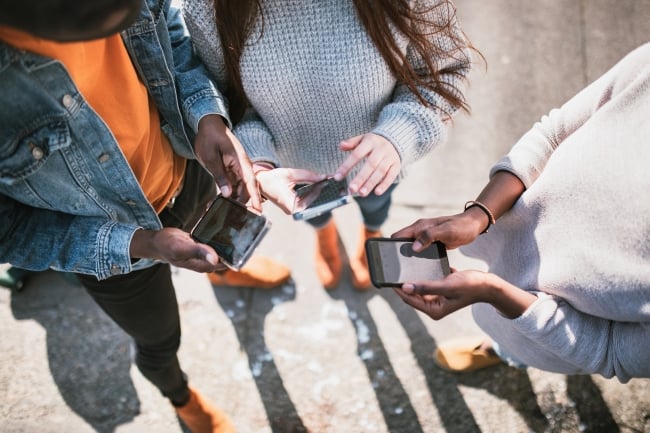You have /5 articles left.
Sign up for a free account or log in.

Media literacy education can help students navigate the world around them more critically.
RyanJLane/E+/Getty Images
Young people today spend a large amount of time online, with a U.S. Department of Health and Human Services report noting teens ages 12 to 17 had four or more hours of daily screen time during July 2021 to December 2023.
This digital exposure can impact teens’ mental health, according to Pew Research, with four in 10 young people saying they’re anxious when they don’t have their smartphones and 39 percent saying they have cut back their time on social media. But online presences can also impact how individuals process information, as well as their ability to distinguish between news, advertisement, opinion and entertainment.
A December Student Voice survey by Inside Higher Ed and Generation Lab found seven out of 10 of college students would rate their current level of media literacy as somewhat or very high, but they consider their college peers’ literacy less highly, with only 32 percent rating students as a whole as somewhat or very highly media literate.
A majority of students (62 percent) also indicate they are at least moderately concerned about the spread of misinformation among their college peers, with 26 percent saying their concern was very high.
To address students’ digital literacy, colleges and universities can provide education and support in a variety of ways. The greatest share of Student Voice respondents (35 percent) say colleges and universities should create digital resources to learn about media literacy. But few institutions offer this kind of service or refer students to relevant resources for self-education.
What is media literacy? Media literacy, as defined in the survey, is the ability or skills to critically analyze for accuracy, credibility or evidence of bias in the content created and consumed in sources including radio, television, the internet and social media.
A majority of survey respondents indicate they use at least one measure regularly to check the accuracy of information they’re receiving, including thinking critically about the message delivered, analyzing the source’s perspective or bias, verifying information with other sources, or pausing to check information before sharing with others.
A missing resource: While there are many groups that offer digital resources or online curriculum for teachers, particularly in the K-12 space, less common are self-guided digital resources tailored to young people in higher education.
“Create digital resources for students” was the No. 1 response across respondent groups and characteristics and was even more popular among community college respondents (38 percent) and adult learners (42 percent), which may highlight students’ preferences for learning outside the classroom, particularly for those who may be employed or caregivers.
Arizona State University’s Walter Cronkite School of Journalism offers a free self-directed media literacy course that includes webinars with journalism and media experts, as well as exercises for reflection. Similarly, Baylor University’s library offers a microcourse, lasting 10 minutes, that can be embedded into Canvas and that awards students a badge upon completion.
The University of North Carolina at Charlotte provides a collection of resources on a Respectful Conversation website that includes information on free expression, media literacy, constructive dialogue and critical thinking. On this website, users can also identify online classes, many of which are free, that provide an overview or a deeper level look at additional topics such as misinformation and deepfakes.
The American Library Association has a project, Media Literacy Education in Libraries for Adult Audiences, that is designed to assist libraries in their work to improve media literacy skills among adults in the community. The project includes webinars, a resource guide for practitioners.
Does your college or university have a self-guided digital resource for students to engage in media literacy education? Tell us more.




